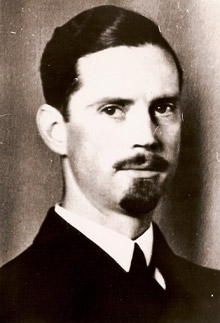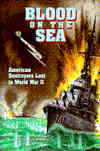With the outbreak of war in September 1939 the training boats were pressed into active service on patrol duties in the Baltic and North Seas, Half of them were returned to the schools at the end of the Polish campaign, only to be recalled to the front during the Norwegian campaign in 1940. However, all training boats returned to their original duties from July 1940 onwards.
War caused a change in the training program, for it was no longer practical to indulge in training at Flotilla level; such training was now reduced to a "practical" for prospective U-boat commanders under the eye of the most experienced captains. At the same time training capacity required for the expanded submarine war program had to be greatly increased. Thus on 16.11.1939 training was laid down for the following numbers of crews yearly:
- 1940 - 54 crews
1941 - 250 crews
1942 - 350 crews (and similarly per year thereafter).
To allow for this UAS 2 was set up in Gotenhafen on 1.7.1940, and UAS 3 in Pillau on 1.7.1941. The Neustadt school was placed under the direct command of the BdU and within the organisation of the BdU service establishment, under direct command of Kapitän zur See von Friedeburg.
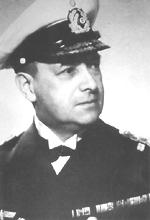 Left: Admiral Raeder.
Left: Admiral Raeder.
Dönitz took the important decision to place U-boat training under the responsibility of the BdU, seeing this as the only way of providing a speedy and easy supply of trained men for the front. The counter-proposal was that all matters relating to training should be placed under the command of the Commanding Admiral, Baltic. These conflicting opinions led to a serious dispute between the BdU and Admiral Raeder. The principle remained however of training specific skills at different training schools with subsequent crew training on board.
Battle-training was provided by extra gunnery and other training schools and I Training Flotilla was set up in November 1939, followed by 2 Training Flotilla in April 1940, both being based in Danzig. A tactical training school was also set up in Gotenhafen from January 1940. All three schools were under the command of the BdU.
Commander training was done individually at Flotillas, and despite the anomalous nature of this training, due to the high standards achieved in peacetime, the method was vindicated by results.
When the U-boat production rate was stepped up in 1941 a further gunnery school was established in Pillau and, to intensify the battle-training schedule in technical matters, a technical training group for combat boats was established in Hela.
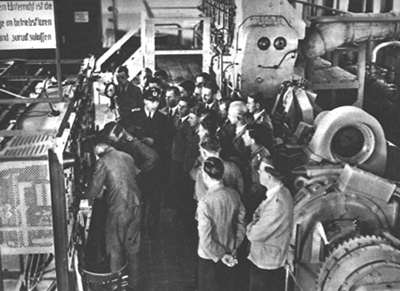
Technical training
In 1940 the whole U-boat training establishment was transferred in April from Neustadt to Pillau, due to the danger from air attack, mine laying operations in the training area of the L?beck Bight, and due to the lack of room at Neustadt. There the school became Number 1. ULD. The 2. ULD, set up in July 1940, was based at Gotenhafen, but could only go into operation in November 1940 due to building difficulties. The attached Flotillas were respectively the 21st and 22nd U-Flotillas.
For crews already trained at the ULDI the 1. UAA was set up in February 1940 in Plön; this acted as a holding camp for fully trained crews awaiting posting to a boat. Skills training continued, and there was the addition of military training. Small groups of these men went to the yards to do building courses, and others went to the other involved manufacturers on short courses.
Due to a delay in building boats, and the resulting back-log of trained crews, 2. UAA was set up to cope with the personnel overflow from I UAA. This was established at Neustadt, with responsibility for the men coming from 2. ULD. The rising numbers of trained crewmen available, coupled with increasing losses led to further intensification of building from the beginning of 1943.
In the organisation structure there were two establishments between the BdU and the ULD and UAA; these were the HKU, which had overall control of the ULD and UAA, and The FdU-AusB, commanding certain training Flotillas. As boats became available with fully trained crews, they were passed on to FdU-AusB as part of the Home Fleet under FdU-Ost.
HKU was established in Kiel on 15 January 1943. It was responsible for all seamanship and mechanical training undertaken in the ULD and UAA. Increasing numbers led to a further division in Autumn 1943 when all technical NCO's and men were moved to 3. ULD.
To train the extra NCO's required for the Type XXI boat 4. ULD was set up in February 1944 in Memel. There, in a short course of three months, men were trained after their time at 3. ULD. The main part of the course was technical. A motorised training aid for 4. ULD never came into service, and following the fall in the number of commissioned boats 4. ULD became superfluous and was disbanded in November 1944.
Sea time was originally allocated to the men on the basis of 10 days for 15 of the crew on board school boats, but this was discontinued when 3 ULD was set up and the new intakes of officers and cadets arrived. Nevertheless the number of training boats grew considerably. The 8 week Officer and NCO course had one week theory and one week practical in rotation, and included 17-18 days sea time. Ratings received dry training in boats in harbour. General seamanship was taught in surface vessels attached to the training flotillas.
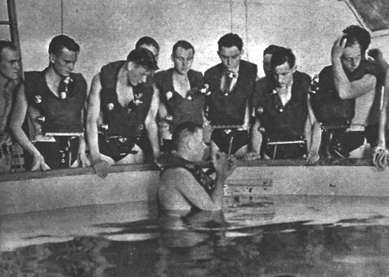
Practicing escape from sunken U-boats
All ranks received training in general matters relating to U-boats. Initially training was in the Type II boats, then from mid-1943 the Type VIIC came into use. (From the end of 1944 a short course in the Type XXI was given, but was discontinued due to the lack of available detail). Training in the use of escape apparatus was standard, with equipment available for practising the use of valves and in equalising pressures. Each trainee also received First Aid training.
The main point of Officer's training lay in the important matter of underwater manoeuvre. First principles were learnt on the submerged steering trainer at ULD, followed by further training on the school boats. The aim of the training was to ensure complete control in simple manoeuvres, steering a straight course under water, minor adjustments of depth, changes of trim at various points of a course, steering the boat under known conditions and in difficulties, overcoming trim and weight distribution problems and completing successfully a diving manoeuvre of modest proportions, Senior NCO's also had a short basic course in underwater manoeuvring, whilst seamen's grade NCO's were trained in the use of the hydroplanes-Of equal importance with general boat knowledge was motor and engine training for technical crew members. Training material included complete engines and motors, cut-away models and training diagrams, including charts and diagrams for diagnosing and repairing faults.
Seaman grade Officers and NCO's had only a short machinery course of a few hours. They did however receive detailed training in U-boat tactics and torpedo firing-Further there was training in ship recognition, simple navigation, and for seamen's Officers and senior watchmen training in meteorology and astronomical navigation. Military training for crews included basic infantry training, seamanship and signalling.
When 3. ULD was set up in Neustadt, 2. UAA had to move from there to Zeren near Bremen, and the task division of the UAAs was changed, 1. UAA now took all trained seamen from both ULDs (including radio and torpedo men), while 2. UAA took all technical crewmen. Further, a six-week course for U-boat cooks was set up elsewhere.
April 1943 saw the 3. UAA set up in Schleswig as a holding unit for surface vessel crews for vessels under BdU command. There was also a testing company. 3 UAA had no direct connection with the U-boat war, having a purely military function. In mid-1944 it was transferred to Pillau.
During the basic training of U-boat commanders under HKU, FdU had command of the remainder of the crews, preparing them for battle, especially in matters of battle-craft and torpedo firing. Due to the direct contact between FdU and 2. SKL all battle experiences could be immediately incorporated into the training.
Once a newly commissioned U-boat had been put under the command of one of the U-boat Admirals, and had a commander and crew, the whole went to FdU-Ost until it went into battle training with FdU-AusB. Here the boat was divided into a number of classes for training, which was completed in three months. The training was flexible enough to allow more or less time to a subject according to results.
FdU-AusB also organised training for new commanders, giving them time with their more experienced counterparts who had already commanded a boat at war. Losses from 1943 onwards however eventually rendered this part of the course ineffective. The trainee commanders, shortly before taking over a boat, were trained at 3. ULD in Neustadt in the F-Equipment; this was a simulator for underwater command having a U-boat type tower with periscope, wheel, gyro-compass and torpedo computer. The trainee saw a battle picture through the periscope and gave details to the computer. Firing the dummy torpedo control stopped everything and mistakes could be analysed. Following this came practical torpedo firing with the special training flotillas in Danzig and Memel.
Seamens' branch commanding officers (Reserve Officers etc) were trained by FdU, not ULD. There followed a 10-day course of practical work in watch keeping on board barges of 19th U-Flotilla in Pillau, accompanied by their crews. 24th U-Flotilla in Memel was set up as a sound-locating training school for NCO's and men,
At the end of 1944 a special school was set up in Hela to train Officers in underwater sound location (SU-Gerät Nibelung), This was 18th U-Flotilla, but it did not go into operation due to the then war situation.
From mid-1944 onwards a special team was organised and controlled by FdU-AusB to examine the new Types XXI and XXIII in order to optimise future training on these boats. This Test Group for U-boats also looked into and tried out new fighting methods that these boats allowed. Specially created groups (Sultan and Pascha) tested new location methods, first submerged, then on the surface.
Early in the Autumn of 1944 Russian advances cut back on the training program. The gunnery flotillas moved from Libau and Memel to Gotenhafen. After the fall of the Weichsel Front the Danzig Bight was denied to the Kriegsmarine. The gunnery schools moved from there to Travem?nde and Wamem?nde in January 1945. Agru-Front moved to Bornholm at the beginning of March, during which move it surrendered control of tactical U-Flotillas. Also, at the start of 1945, 1. and 2. ULD moved west to Hamburg-Finkenwerder and Wilhelmshaven, where they were ordered to surrender soon after setting up. 3. UAA in Pillau was ordered into the fighting there.
